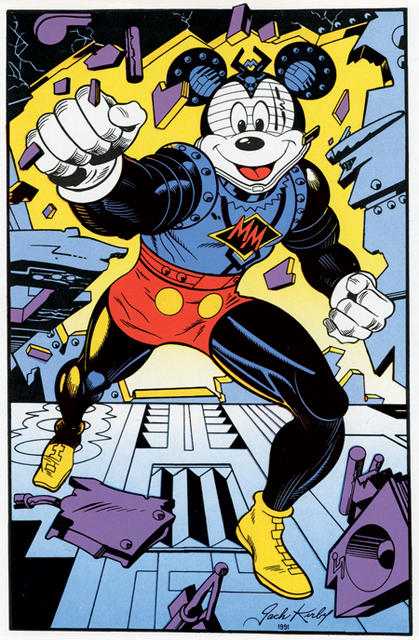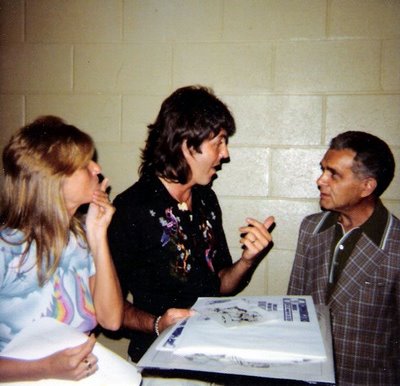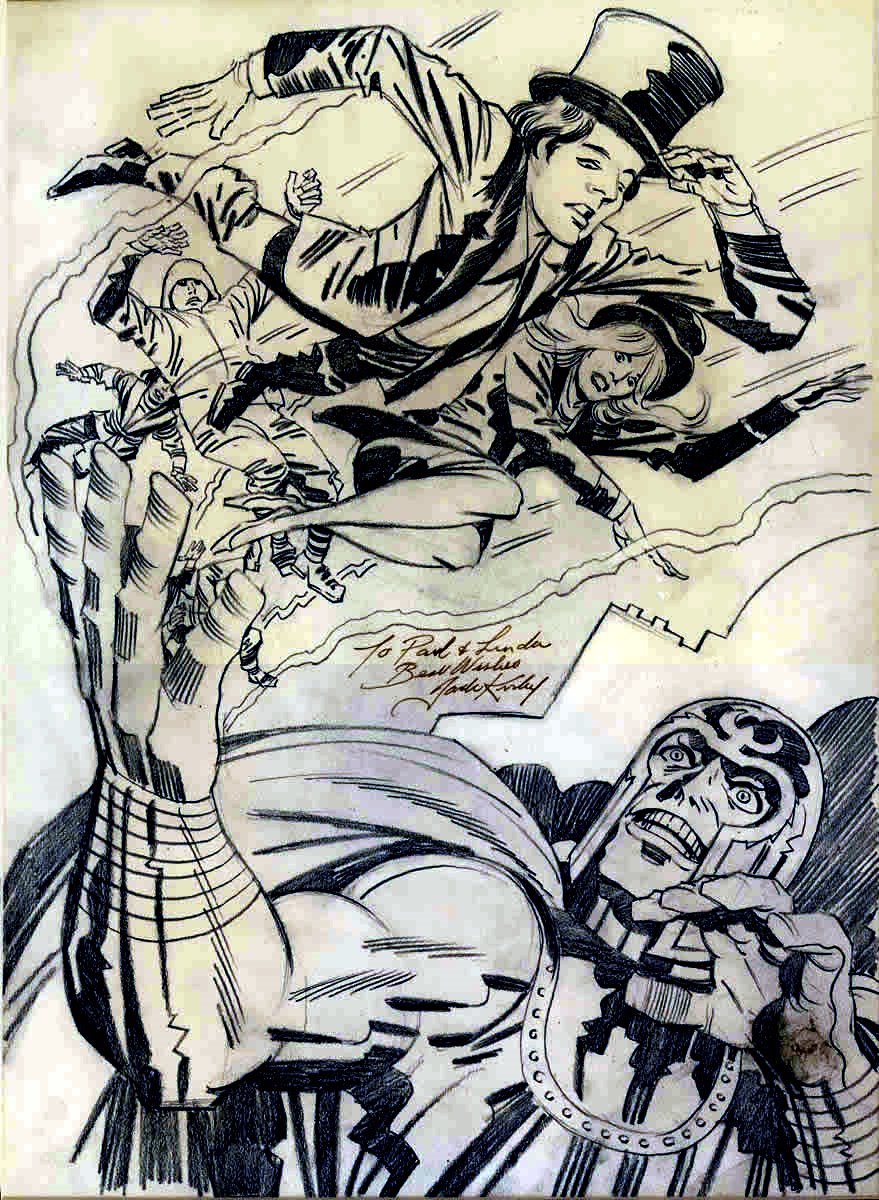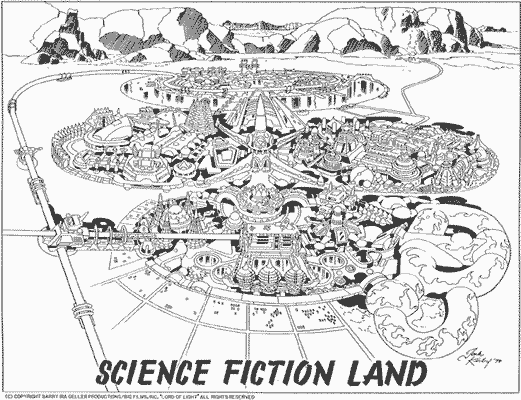Pencils by Jack Kirby; inks, Mike Thibodeaux; colors, Craig Yoe. Copyright Walt Disney Company
The late, great cartoonist Jack Kirby (1917-1994) is chiefly remembered for his epic superhero and awe-inspiring science fiction creations. But over his long career he dabbled in every known popular genre — often to surprising result.
What to make of this, for example?
It’s a strip proposal for a Valley Girl series, loosely based on the early-eighties hit song by Frank Zappa (1940-1993). A case of an old-timer trying to muscle in on the latest thing?
Not quite. It turns out that Kirby drew it at the suggestion of Zappa himself; the two California residents were friends.
Frank Zappa and Jack Kirby
Despite belonging to the ‘greatest generation’ that came of age in the Depression and fought WWII, Kirby was very much open to the pop culture of the young. In turn, pop artists often hommaged or appropriated his work. Case in point: Paul McCartney and his post-Beatles band, Wings, produced a ditty titled ‘Magneto and the Titanium Man’.
Jack, the creator of Magneto, was delighted. And it came to pass, in 1976, that Kirby met McCartney backstage at a Wings concert:
Linda McCartney, Paul McCartney, and Jack Kirby
Kirby later portrayed Paul, Linda and the band alongside Magneto, as a gift for the singer:
The cartoonist Jim Woodring reports that Kirby was part of a rock band at the animator Ruby-Spears back in the ’80s.
**************************************************
Kirby was also involved in an extremely bizarre case of international intrigue.
A Hollywood producer hired him to design the costumes and settings for a film based on Roger Zelazny‘s myth and SF novel, Lords of Light. Kirby was also retained to conceptualise a grandiose theme park for the same party:
Like most such megalomaniac ventures, the twin projects came to nothing.

But the enterprise had a strange aftermath.
In 1979, a mob of Iranian students occupied the United States embassy in Teheran, taking all its personnel hostage. Six employees of the American consulate, however, managed to escape capture and were hidden by the Canadian embassy.
The CIA, in cooperation with Canadian authorities, devised a plan to exfiltrate the Americans by having them pose as location scouts for a fictional upcoming Hollywood movie. The agency chose for the non-existent film project the Lord of Light script, retitled Argo.
And so, along with the script, Jack Kirby’s numerous pre-production drawings were flown into Iran, where they were issued (along with fake Canadian I.D.’s) to the beleaguered Americans, who were able to fly out of the country to freedom.
This bizarre story was the subject of the well-regarded 2012 fictionalised film, Argo, directed by Ben Affleck; alas, Kirby’s drawings were not used.
I’m still mourning that awesome theme park.
**********************************************
In May 1972, Kirby published a strip in an unusual genre (reportage) and an unusual venue (the slick Esquire magazine) for him: a three-page re-telling of the murder of Lee Harvey Oswald, President Kennedy’s assassin, by Jack Ruby. Here’s the third page, with inks by Chic Stone:
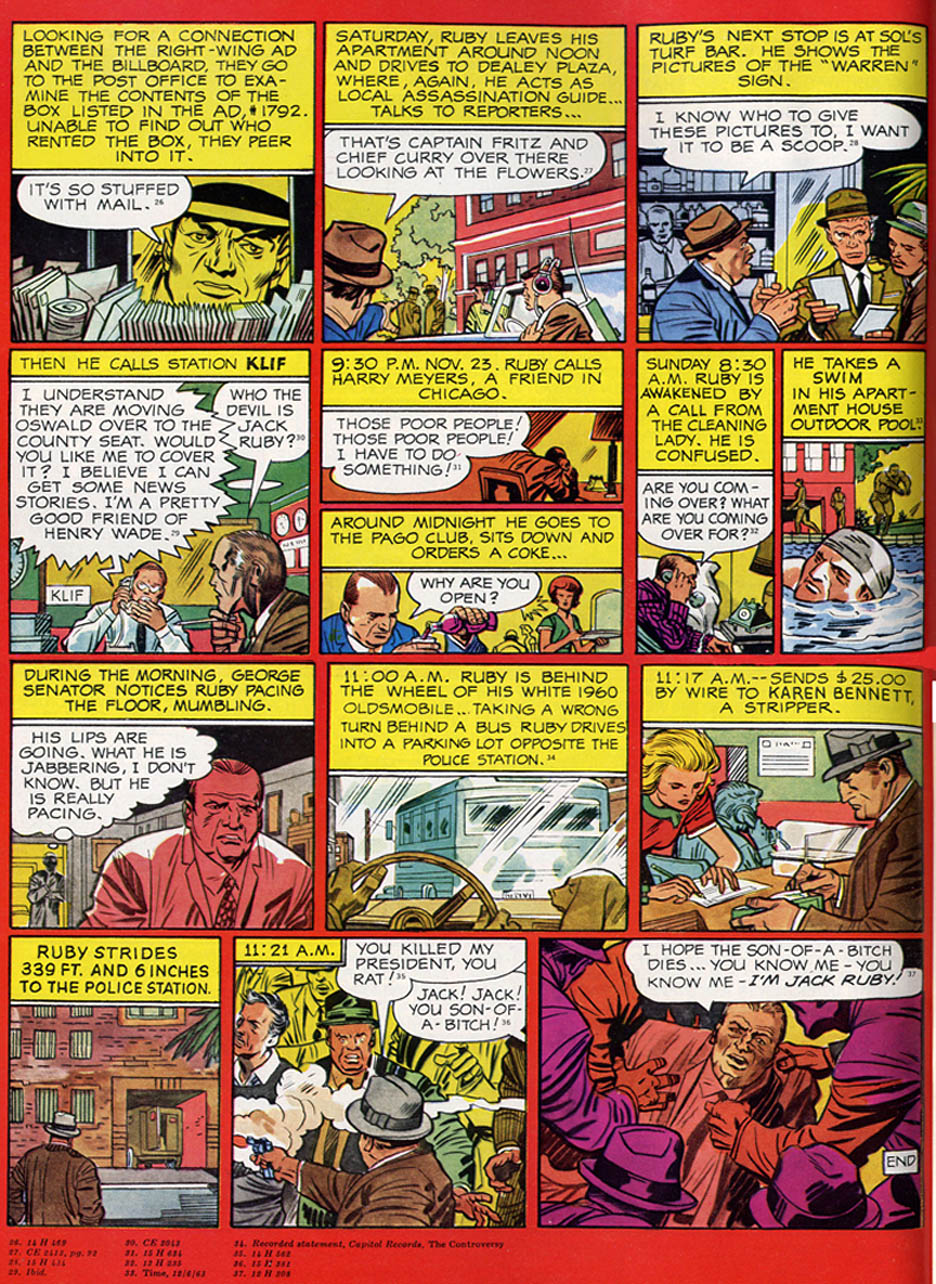
Kirby’s career encompassed so many genres, though, that perhaps it’s inaccurate to describe any of his work as an oddity. It’s still a trifle jarring to encounter the following work from the beginning of his career: a political cartoon.
All drawings by Jack Kirby — under various pseudonyms.
The image at the top of this column is from Craig Yoe‘s The Art of Mickey Mouse. Here’s a rejected Kirby drawing for the same book:
Truly a Jack of all trades!

